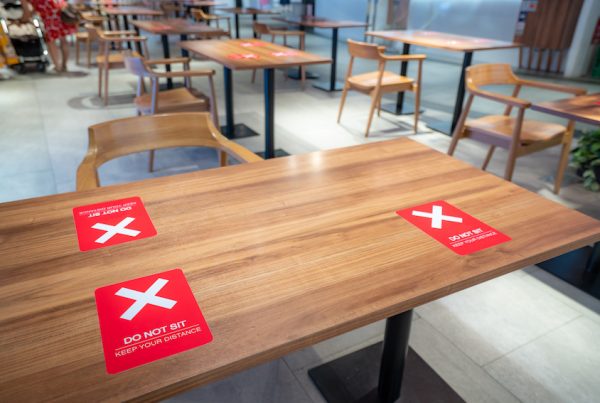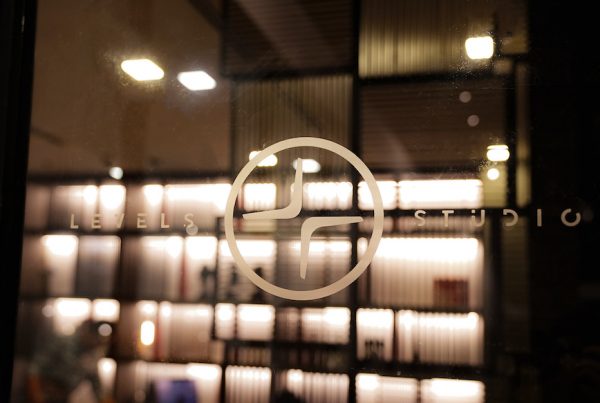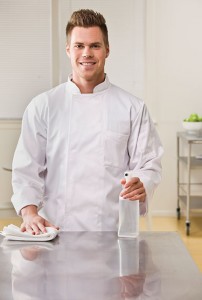 The commercial kitchen is filled with equipment proudly labeled as ‘stainless steel’. It has become a necessary criterion for purchasers to have but is it just a buzzword or do we know its origins and the proper way to maintain its proper ties? Steel is not made up of one compound and so stainless steel is not a single metal, but rather, an alloy which means a material produced from two or more separate elements that are “melted” (alloyed) together. In the early 20th century, stainless steel was discovered upon the experiment of adding metal chromium to ordinary steel which resulted in steel that was bright and shiny as well as resistant to tarnishing and rusting. Due to its “corrosion resistance”, stainless steel is markedly different from other forms of steel. And because of its unique property, special care must also be administered to keep stainless steel equipment functioning in the long run.
The commercial kitchen is filled with equipment proudly labeled as ‘stainless steel’. It has become a necessary criterion for purchasers to have but is it just a buzzword or do we know its origins and the proper way to maintain its proper ties? Steel is not made up of one compound and so stainless steel is not a single metal, but rather, an alloy which means a material produced from two or more separate elements that are “melted” (alloyed) together. In the early 20th century, stainless steel was discovered upon the experiment of adding metal chromium to ordinary steel which resulted in steel that was bright and shiny as well as resistant to tarnishing and rusting. Due to its “corrosion resistance”, stainless steel is markedly different from other forms of steel. And because of its unique property, special care must also be administered to keep stainless steel equipment functioning in the long run.
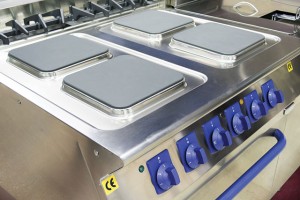 Equipment made of stainless steel range from counter tops; worktables to machinery and the degree of maintenance vary. Flat surface items are easy to wipe down with just a mild detergent and wet cloth; followed by wiping over with a dry towel to prevent water spots as minerals in water could leave marks on stainless steel. If there are no spills on the surface, usually water would suffice to clean it. Wiping down the worktables everytime you finish a task is the easiest way to keep the stainless steel good for the long haul. When it comes to equipment made with stainless steel, the cleaning process will be different and most manufacturers prepare their own guide to maintain the particular machine.
Equipment made of stainless steel range from counter tops; worktables to machinery and the degree of maintenance vary. Flat surface items are easy to wipe down with just a mild detergent and wet cloth; followed by wiping over with a dry towel to prevent water spots as minerals in water could leave marks on stainless steel. If there are no spills on the surface, usually water would suffice to clean it. Wiping down the worktables everytime you finish a task is the easiest way to keep the stainless steel good for the long haul. When it comes to equipment made with stainless steel, the cleaning process will be different and most manufacturers prepare their own guide to maintain the particular machine.
Speaking to Winterhalter, one of the industr y’s frontrunner in warewashers made with this material, the company says that understanding characteristics of this type of steel is impor tant. Despite its resistance, stainless steel is still vulnerable to damage from factors like rust that appears as a red discolouration and this corrosion is an irreversible process that spoils the sur face. Common causes of rust include:
- . Spreading of outside rust when rusty items are washed along with other dishware and the use of metal pot scrubbers.
- . Overly harsh chemicals and the use of wrong cleaning and decalcification agents such as hydrochloric acid or very highly chlorinated water.
- . Improper use of stainless steel equipment. While it does not destroy the stainless steel compound, it damages its appearance such as occurrence of brown discolouration in the tank when manually filled powder detergents are used or irreversible build-up from excessively cold water mixing with the powder.
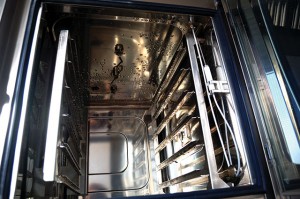 Not all stainless steels are the same. As an example, Winterhalter’s line of commercial warewashers and table systems uses a non-rusting, acid-proof stainless steel (No. 1.4003) which is resistant to ordinary chemical and thermal effects like hot water, water vapour, humidity, oil or grease plus resistance towards detergents and rinse aids. To best complement the type of stainless steel used, custom cleaning and care products should be utilised. Winterhalter’s stainless steel warewashers feature a self-cleaning program that cleans the inside of the machine but filters and wash fields require manual cleaning while a small but important note is to leave the warewasher door open overnight to prevent moisture being trapped as that can cause rust. A two-step process is under taken to clean the exterior stainless steel surface of the warewasher beginning with removal of dirt and grease build-up with an alkaline fat-dissolving C 112 cleanser and then treated with a specially formulated polish known as C 161. This polish is efficient in removing fingerprints and dust buildup and is made with compounds that comply with the safety standards of the food industry. It also protects the material and prevents dust from collecting again within a short time.
Not all stainless steels are the same. As an example, Winterhalter’s line of commercial warewashers and table systems uses a non-rusting, acid-proof stainless steel (No. 1.4003) which is resistant to ordinary chemical and thermal effects like hot water, water vapour, humidity, oil or grease plus resistance towards detergents and rinse aids. To best complement the type of stainless steel used, custom cleaning and care products should be utilised. Winterhalter’s stainless steel warewashers feature a self-cleaning program that cleans the inside of the machine but filters and wash fields require manual cleaning while a small but important note is to leave the warewasher door open overnight to prevent moisture being trapped as that can cause rust. A two-step process is under taken to clean the exterior stainless steel surface of the warewasher beginning with removal of dirt and grease build-up with an alkaline fat-dissolving C 112 cleanser and then treated with a specially formulated polish known as C 161. This polish is efficient in removing fingerprints and dust buildup and is made with compounds that comply with the safety standards of the food industry. It also protects the material and prevents dust from collecting again within a short time.
Depending on where you purchase stainless steel equipment from, it is always best to follow the manufacturer’s guideline to ensure that your investment is best maximised and goes the mile.
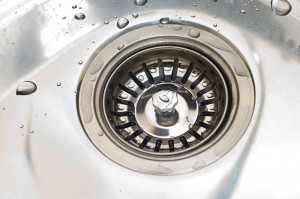 Special thanks to Winterhalter Gastronom GmbH for the contribution on stainless steel care.
Special thanks to Winterhalter Gastronom GmbH for the contribution on stainless steel care.
Founded in 1947 and now with three production sites at Meckenbeuren at Lake Constance, Endingen am Kaiserstuhl and Ruthi in Switzerland, Winterhalter specialises in general and tailored dishwashing solutions as well as niche small dishwashers for glassware and crockery all the way to multi-tank and rack conveyor dishwashers.







